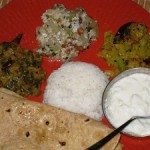Health Benefits of Rice
The health benefits of rice are many. Rice is the staple grain for more than half the world’s population, especially Asia. Rice is becoming increasingly popular in other parts of the world as well.
Rice Varieties
There are more than 25,000 varieties of rice. Rice is mainly consumed in two different forms: brown rice and white rice. Brown rice is unmilled or partly milled and retains the outer bran and germs and as such can be called whole grain rice. It is these outer layers that contain all the nutrients.
In white rice, the outer layers of bran and germ are removed or polished, and is therefore less nutritious. If you want to get the maximum health benefits of rice, you know which type to use.
Rice is also categorized by the length of its grain, as long-grain, medium-grain, and short-grain. Long-grain rice, such as basmati and jasmine, is less sticky and more fluffy when cooked, and ideal for preparing flavored rice dishes such as fried rice and pulao (pilaf). Medium-grain rice is more sticky and chewy, while the shorter varieties, such as the Italian arborio, are extremely sticky and chewy, and good for dishes like the Indian Khichadi (pongal) and Italian risotto, and gruels like ganji or conji.
In the US, you will also find wild rice, which is grown in Minnesota, Michigan, and California. Wild rice has a distinctive flavor, and is available in long and short grain forms. It’s more chewy than the regular white rice but also more nutritious. There is increasing interest in this rice from those interested in consuming healthy food.
Health Benefits
Health benefits of white rice and benefits of brown rice differ, but as far as calories, carbohydrates, and protein are concerned, both brown and white rice contain similar amounts. However, in terms of vitamins and minerals, brown rice is a good source of vitamins such as Vitamin B1 (thiamine), vitamin B2 (riboflavin) vitamin B3 (niacine), iron, along with magnesium and dietary fiber.
In white rice, many of these nutrients are polished away. In the US, these vitamins and minerals are added back to the rice, and sold as enriched rice.
Rice is a great source of complex carbohydrates which give us the energy we need. According to FAO (Food and Agriculture Organization of United Nations), rice provides 20 percent of the world’s dietary energy supply.
Rice contains all the amino acids essential for building and maintaining muscle tissue, and make up antibodies, enzymes, and hormones. These amino acids also help maintain healthy skin, hair, eyesight, and nousish the heart, lungs, tendons and ligaments, brain, nervous system and glands.
Health benefits of brown rice include it’s role in reducing bad cholesterol. Brown rice contains oil in its outer layer (bran), and studies show that this oil can help lower bad cholesterol (LDL).
Early oriental writings mention the calming and soothing effect of brown rice which has been confirmed by modern science. In ancient literature of Thailand, China, India, and Burma, rice is mentioned as a source of health, and brown rice as a healing food. In these cultures, rice is considered as a source of divine health and is used in religious offerings.
The B-complex vitamins in brown rice, especially thiamin, riboflavin, and niacin provide youthful energy, and nourish the skin and blood vessels.
The benefits of basmati rice are in their low starch or carbohydrate content. The Canadian Diabetes Association points out that basmati rice has a medium glycemic index between 59 – 69, when compared to 89 for white rice, and as such basmati rice is a better option for diabetics. Jasmine rice, on the other hand, has a very high glycemic index of 109, which is more than that of pure glucose, and should be avoided by diabetics.
Rice is low in fat, cholesterol, and sodium and hence makes a perfect food for those with high blood pressure and requiring a low-sodium diet. The calcium in rice (especially brown rice) helps lower blood pressure.
White rice is one of the easiest and quickest foods to digest requiring only an hour to completely digest it. As such, rice is an ideal health food for those who are debilitated and weak and require easy assimilation and quick energy. Because of the low fiber content, white rice is very soothing to the digestive system and rice gruels along with buttermilk are recommended for digestive disorders such as diarrhea, dysentery, morning sickness, colitis, and jaundice.
Rice powder is also used externally as a soothing powder in cases of skin inflammation such as small-pox, measles, prickly heat, burns and scalds.
To sum it up, rice is an important part of a healthy diet. To derive the maximum benefit from it, include unpolished or brown and wild rice varieties as often as you can in your meals along with white rice.
Category: Health








Brown rice is a wonderfully stable food. My daughter and I include rice in our diet just about every day. I enjoy eating it with sauteed onions, carrots, green peppers and garlic – seasoned with turmeric, cayenne pepper, himalayan salt and ginger. This dish can be eaten for breakfast, lunch or dinner. Just sautee and mix with rice. Feeling a little daring? Add black beans or which ever type of bean you like along with tomatoes to this dish. Enjoy!